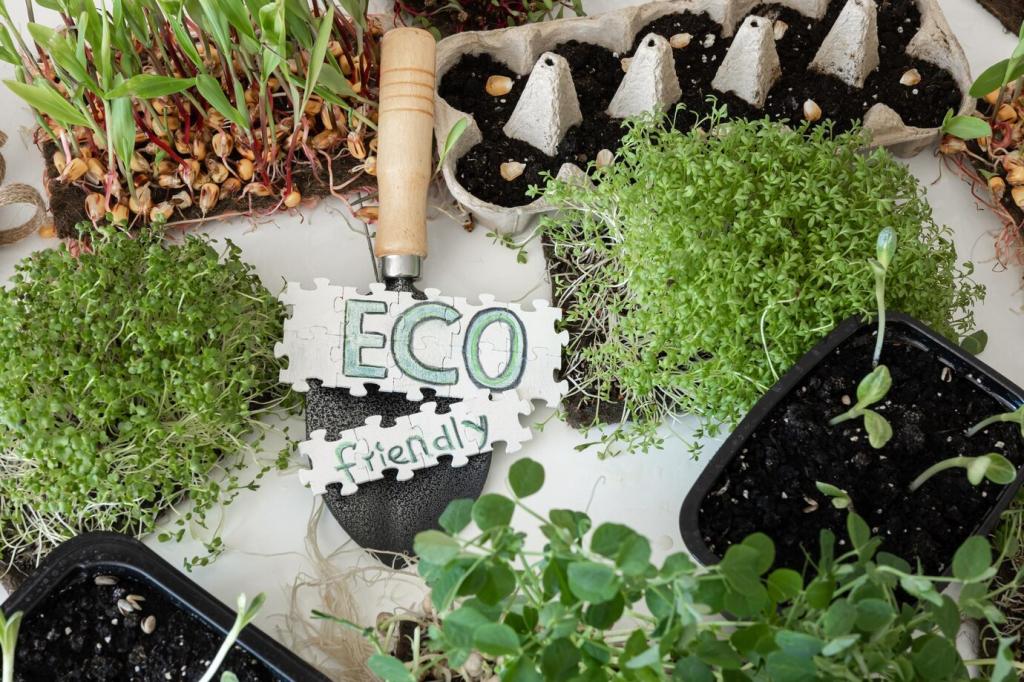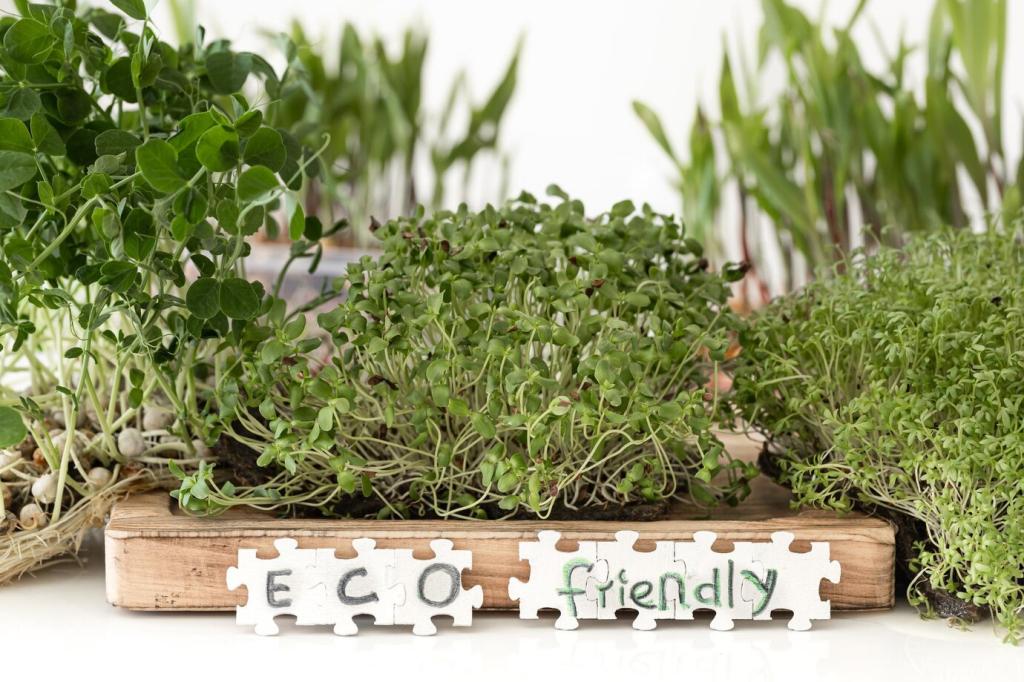Taming the Rain: Stormwater Management by Green Roofs and Vertical Gardens
Chosen theme: Stormwater Management by Green Roofs and Vertical Gardens. Welcome to a living, breathing approach to urban water. We’ll explore how rooftops and facades become sponges, slow storm surges, and turn gray runoff into green resilience. Read on, share your questions, and subscribe to follow every new rain-smart idea.

The science of retention and evapotranspiration
Green roofs capture rainfall in their substrate and plants, often retaining 40% to 80% annually depending on depth and climate. Water that is not stored is slowed, cooled, and released later. Evapotranspiration returns moisture to the atmosphere, reducing sewer loads and first-flush pollution that harms streams.

Layers that make a roof act like a sponge
A robust green roof stacks purpose-built layers: waterproofing, root barrier, drainage, filter fleece, engineered substrate, and vegetation. Together they spread water laterally, hold it in pore spaces, and release it gradually. Comment if you want our printable layer diagram, and tell us which layer confuses you most.

Vertical gardens as downpipe forests
Facades use modular panels, capillary mats, or pocket systems to intercept rain and irrigation. When integrated with gutters and cisterns, vertical gardens delay and reuse stormwater, irrigating plants precisely while easing downpipe surges. Share your experiences with facade greening systems that survived both gales and droughts.
Designing for Your Climate and Roof
01
Choosing between extensive, intensive, and blue‑green roofs
Extensive roofs are lightweight and shallow, great for broad coverage and frequent storms. Intensive roofs allow deeper soils and trees, boosting storage. Blue‑green roofs overlay controlled detention under vegetation, flattening peaks even during cloudbursts. Ask us which typology fits your roof structure and rainfall patterns best.
02
Plant palettes that drink, breathe, and survive
Sedums excel in drought but also handle short wet spells. Add grasses, alliums, and native forbs to increase evapotranspiration and seasonal interest. In humid climates, diversify roots to avoid substrate saturation. Share your region and we’ll suggest three hardy species that stabilize media and sip storms effectively.
03
Structure, waterproofing, and risk management
Start with a load check and high-quality membrane protection. Use root-resistant layers and inspect details around drains, parapets, and penetrations. Overflow pathways must be deliberate, not accidental. Tell us your roof age and slope; we’ll help you plan safe loads, overflow strategies, and maintenance-friendly access points.

Metrics you can trust: retention, detention, and lag time
Retention is water kept on-site, often reported as a percentage per storm or annually. Detention is delayed release, quantified by peak flow reduction. Lag time captures minutes of delay between rainfall and runoff—often 10 to 45 minutes. Post your latest storm stats and we’ll help interpret patterns.

Seasonality, heat waves, and first‑flush realities
Winter may reduce plant uptake but create storage via dry spells; summer boosts evapotranspiration yet can start with dry substrates. The first flush carries the most pollutants—green systems help dilute and delay it. Share your seasonal observations to refine irrigation and overflow settings before the next downpour.

Simple monitoring setups for pros and citizen scientists
A rain gauge, a few low-cost water-level loggers, and a smart outlet control box can reveal powerful insights. Pair timestamps with local radar to validate your detention curve. If you track data, comment with your device list, and we’ll suggest calibration tips and open-source dashboards to visualize results.
A brick warehouse near a combined sewer outfall flooded every September storm. After a blue‑green retrofit, peak discharge fell by 72%, and the alley stopped turning into a river. The owner now texts neighbors before storms, reminding them to clear inlets—a small habit that keeps the system singing.

Operations: Keeping Green Systems Rain‑Ready
Seasonal care without the fuss
Quarterly inspections catch clogged drains, eroded media, and wind-lifted edges early. Autumn leaf screens, spring media top-ups, and occasional weeding do wonders. Create a one-page checklist and assign roles. Share your maintenance routine below, and we’ll suggest tweaks to prevent sneaky overflow surprises before big storms.
Smart irrigation and reuse, only when needed
Use soil moisture sensors tied to weather forecasts to irrigate sparingly. Prioritize captured stormwater in cisterns and pause irrigation before predicted rain to free storage. If you track tank levels, comment with your thresholds; we’ll help tune setpoints that balance plant health and detention capacity.
Biodiversity as free infrastructure
More species mean varied root depths and year-round transpiration, translating to steadier storm performance. Pollinator strips along drains support bees while stabilizing media. Consider microhabitats—logs, stones, shallow pans—that slow flows. Tell us which species you love, and we’ll map them to hydrologic functions your roof may be missing.

This is the heading
Lorem ipsum dolor sit amet, consectetur adipiscing elit. Ut elit tellus, luctus nec ullamcorper mattis, pulvinar dapibus leo.

This is the heading
Lorem ipsum dolor sit amet, consectetur adipiscing elit. Ut elit tellus, luctus nec ullamcorper mattis, pulvinar dapibus leo.
